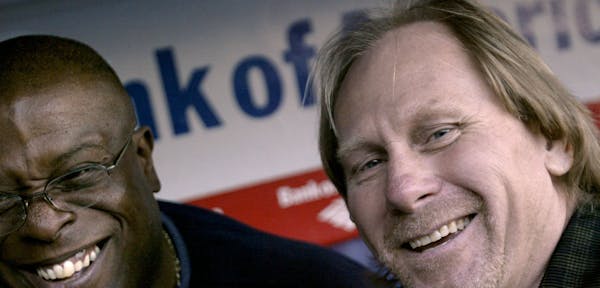For a fourth consecutive season, the Twins have reached 90 losses. It's time for an organization that prides itself on patience to embrace change, even if only for the sake of change.
There are a lot of reasons the Twins have failed for four years, and not all of them are the fault of team decisionmakers. That doesn't mean the franchise should bring all of its key decisionmakers back.
As a franchise dependent on acquiring talent through the draft, the Twins had a 10-year run of competitiveness that forced them to make their picks late in rounds, in a sport in which a late-first-round draft pick is a long shot to become a star.
As a team that dominated the American League Central because of trades by General Manager Terry Ryan, the franchise went into a precipitous dive in talent acquisition while Ryan's replacement, Bill Smith, ran the team.
During Ryan's absence, the Twins' player development failed as well, producing rookie big leaguers who didn't know what a "wheel play" was — it's a method of defending the sacrifice bunt — or that being a big-leaguer meant more than cashing a larger check.
Ryan's recognition that the team can't afford to go through another mid-90s dry spell while trying to sell tickets to Target Field led him to make rare forays into free agency. He signed Ricky Nolasco to the largest free-agent contract in franchise history, and Nolasco, instead of becoming something of a savior, helped bury the team in the standings again earlier this season.
In 2010, Ron Gardenhire won the American League manager of the year award. Since then, he has managed a team that has often looked sloppy, while many of his former players have gone on to great success elsewhere, often complaining about the way they were managed or taught in Minnesota.
Ryan and Gardenhire have, at times, done exceptional work together, but no longer should the Twins treat their pairing as sacred.
Never before has the franchise enjoyed such advantages and wasted them. Target Field and baseball's broadcast deals bring in enough money for the Twins to be able to spend reasonably in free agency. Target Field gives the franchise a chance to sell thousands of high-priced tickets if the product on the field is merely competitive.
A major league team playing in an advantageous ballpark can't pretend it is different or better than other franchises. It can't ignore public discontent.
So, who goes?
Ryan has not immediately improved the major league product, but he has built one of the three best farm systems in baseball. He has earned the right, as one of the best general managers of the 2000s and the man responsible for the improvement of the current farm system, to guide the team as its best prospects rise.
What's Gardenhire's saving grace?
He shouldn't be solely blamed for the team's record, which is mostly because of an inability to acquire or develop quality starting pitching.
But too many players have thrived after leaving. Too many have griped about the Twins' managing or coaching. Too many talented players have looked lost while wearing Twins uniforms. And too many fans have lost all interest in watching a team that often looks as if it is learning the game from scratch during the middle of a big-league season.
Ryan's first departure might have killed Gardenhire's chance to become the rare manager who lasts for decades with one team. Ryan has and had the ability to counter Gardenhire's competitive urge to win today's game, regardless of what might be best for the franchise long-term. Smith, who rose to power as an administrator, was unable to balance Gardenhire's urgency with a wise long-term outlook.
Smith traded Johan Santana for a slew of Mets prospects that included Carlos Gomez. Gomez has become a star, so that trade isn't as foolish as it seemed at the time.
He traded Gomez for J.J. Hardy, an understandable move for a team thinking it was a veteran shortstop away from winning playoff series.
Then Gardenhire asked for more speed at the position, and Smith traded Hardy to the Brewers for reliever Jim Hoey. To replace Hardy, Smith signed Tsuyoshi Nishioka, perhaps the worst player to grace the big leagues in the past 10 years.
Gardenhire has contributed to some of the failed decisions. He has managed sloppy teams. He has watched players thrive after leaving.
Perhaps more to the current point: When given his shortstop of the future, a wonderful young player named Danny Santana, Gardenhire chose to him play him in center field, in a misguided attempt to win an extra game or two in a lost season.
The losing might not be his fault, but the Twins owe it to themselves to test that theory.
Jim Souhan can be heard weekdays at noon and Sundays from 10 to noon on 1500 ESPN. His Twitter name is @SouhanStrib. • jsouhan@startribune.com

Souhan: This Wolves team is why we love to watch sports

Souhan: Experts made two mistakes when they panned Gobert trade
Souhan: Wolves deserve better challenge than soft, shallow Suns

Souhan: These seven plays showcase Wolves' new defensive fire


